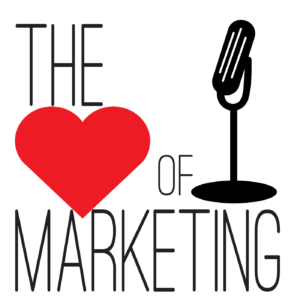You can know a lot about your customers and still not really understand them.
Today it’s relatively easy to collect data on customer behavior and customer sentiment. But these data don’t tell you why they do what they do or why they think what they think. Understanding the why is as important as knowing the what.
That is often the missing link in voice of customer research, according to Scott Hornstein.
Hornstein is a marketing consultant and co-author of Opt-in Marketing, who has done voice of customer research for more than 30 years. He has learned that in order to understand what customers want, there is no substitute for talking to them directly.
“Most of the people working in marketing, be they designers, copywriters, programmers, have never met a customer,” he said in an interview on The Heart of Marketing. “They’ve never spoken to a prospect, would not know one if they came across one on the street. What they write to, what they design to, what they program to is some ethereal thing.”
But customer awareness based solely on quantitative data can lead you astray.
“It may be backed up by a little data, but it’s also backed up by years and years of widely held beliefs,” Hornstein said. “If the mythology of the corporation is that all of our customers are left handed, how would we know otherwise, unless we actually speak to them? It comes down to a conversation. A meaningful, directed conversation.”
Hornstein’s customer conversations have helped clients bust myths and connect with customers in meaningful and profitable ways.
One example is Asigra, a Toronto-based company that made its mark selling backup and recovery software to marketing groups in the small and midsized market. Asigra was recognized by Gartner for its software innovations, which helped position the company to compete in the enterprise software market.
Hornstein’s research uncovered significant differences between customers in the two markets. Asigra had established itself as the cloud backup experts, which resonated in the SMB marketplace. Not so with the enterprise decision makers.
“In talking to these decision makers within the enterprise, we found out two things,” said Hornstein. “Number one, they don’t care about backup. Backup is a cost center. It’s a hole in the ground that they shovel money into. But recovery is a key part of their commitment to the organization. So recovery, not backup.
“Number two, they have an almost religious aversion to the use of the term ‘cloud’. They said, ‘I am running a billion dollar organization so don’t tell me my data is somewhere in a cloud. I want to touch my data.’ So we had to change the way we were speaking. And we wouldn’t have known that unless we engaged these people in directed conversation.”
It comes down to a conversation. A meaningful, directed conversation.
Actually talking to customers is critical to getting voice of customer insights that help you understand your customers and achieve your business goals. It moves your data from the place of knowing some things about them to understanding how they feel.
“In quantitative research we ask the question and we get the answer,” Hornstein said. “But in qualitative voice of customer research we get to ask, ‘What do you mean by that? Let’s go a little deeper. Why is that so? Why does that matter?’ It’s a fascinating, illuminating process.”
***
[BONUS: You can hear the complete interview with Scott Hornstein on The Heart of Marketing. Listen in to learn more about voice of customer insights and developing personas to connect with your customers.]













Speak Your Mind